
Planting & Picking Strawberries: How It’s Done
Alongside apples, strawberries are one of the most popular types of fruit in this country and are eaten with pleasure. Growing them in your own garden or on the balcony is child's play, as strawberries are easy to care for and produce a high yield if looked after properly. In this article, you will get an overview of the needs of the strawberry plant, as well as tips and tricks for planting, caring for and picking strawberries. This way, growing your own strawberries is guaranteed to be a success!
This Article Contains:
- Growing Strawberries: What You Should Know
- Planting Strawberries: Location & Soil
- Planting a Strawberry Bed: How to Do It
- Planting Strawberries: Timing & Planting Distance
- Planting Time for Strawberries: Garden, Monthly & Frigo Strawberries
- Mixed Crop Planting Plan With Strawberries: Good Companion Plants
- Sowing Strawberries: How It Works
- Picking Strawberries: How to Harvest Them
- Storing Strawberries
- Frequently Asked Questions About Planting Strawberries
Quick Overview
Strawberries: The Right Location
- full sun to partial shade, sheltered from the wind with loose, slightly acidic soil
- the optimum pH value varies between 5.5 and 7 depending on the variety, with wild strawberries preferring more acidic soil and garden strawberries a slightly acidic to neutral pH value
When and How Do I Plant Strawberries?
- Timing: young plants are best planted in summer between June and August, but you can also plant them in spring or fall
- Row spacing: at least 60 cm/23,6 in
- Planting distance: 20 - 30 cm/7,9 - 11,8 in
- Plant strawberries in a mixed culture to keep out unwanted guests and diseases
Sowing Strawberries: How It Works
- Strawberries are usually propagated using cuttings, but you can also sow some varieties yourself. You can start pre-breeding from January and March and the plants can then be planted outdoors from May.
- Strawberries are light germinators and are therefore only lightly covered with soil. The germination temperature is 20 ° C/68 ° F.
Growing Strawberries: What You Should Know
Strawberries (Fragaria) are, as you might not immediately expect, part of the rose family (Rosaceae) and are therefore direct relatives of fruit species such as apples, cherries and quinces. The perennial, hardy plants produce five-petaled, white flowers that are characteristic of this family. Depending on the variety, they develop into small or large strawberries that bear their seeds on the outside of the skin. This is why it is also a so-called aggregate fruit and, botanically speaking, is not a berry . Once planted in the garden, you can enjoy the plant for several years and can harvest it for around three to four years with good care. However, most gardeners replace strawberry plants after this period, as the production and quality of the fruit decreases. However, this also depends heavily on the variety, location, care and weather conditions.
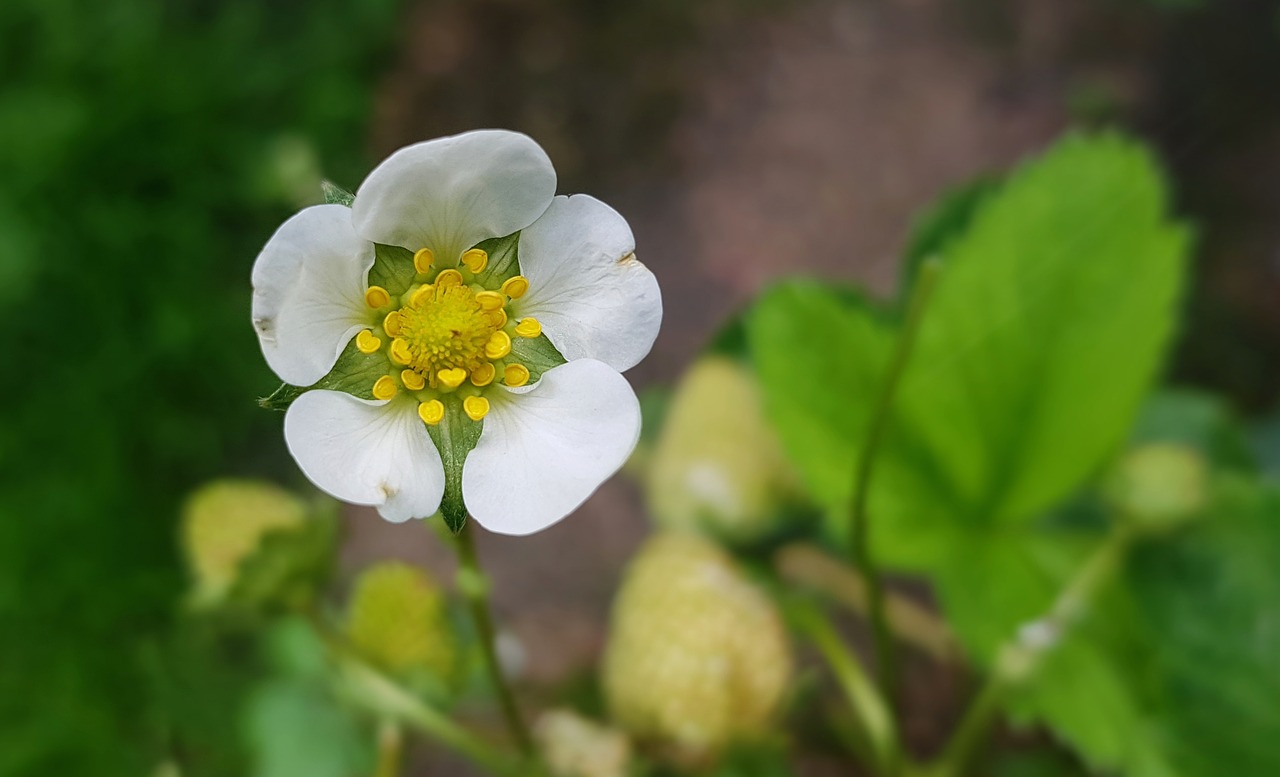
Planting Strawberries: Location & Soil
To ensure that your protégés thrive, you should choose the right location. The requirements differ slightly depending on which strawberry variety you want to grow.
The Right Location for Strawberries: Sun or Shade?
The fruits of the strawberry plant gain sweetness and flavor when exposed to a lot of sunlight. Therefore, a sunny spot is definitely the right place for most strawberry varieties. However, this does not apply to all varieties and the small wild strawberries also thrive in partial shade. The spot should be sheltered from the wind for all strawberry plants. However, a small draught is always an advantage so that the leaves dry off more quickly after a rain shower.
Soil: The Right PH Value
The soil should be loose and not too heavy, as strawberry plants tend to develop root diseases in compacted soil. The plant is sensitive to salt and lime and prefers soils with a slightly acidic pH value between 5.5 and 6.5. Wild strawberries in particular are better suited to acidic soils; this preference can be traced back to their origin. Wild wild strawberries grow naturally in the forest, where the soil is slightly acidified by a mulch layer of leaves. Other species, such as garden strawberries, prefer a pH value between 6 and 7.
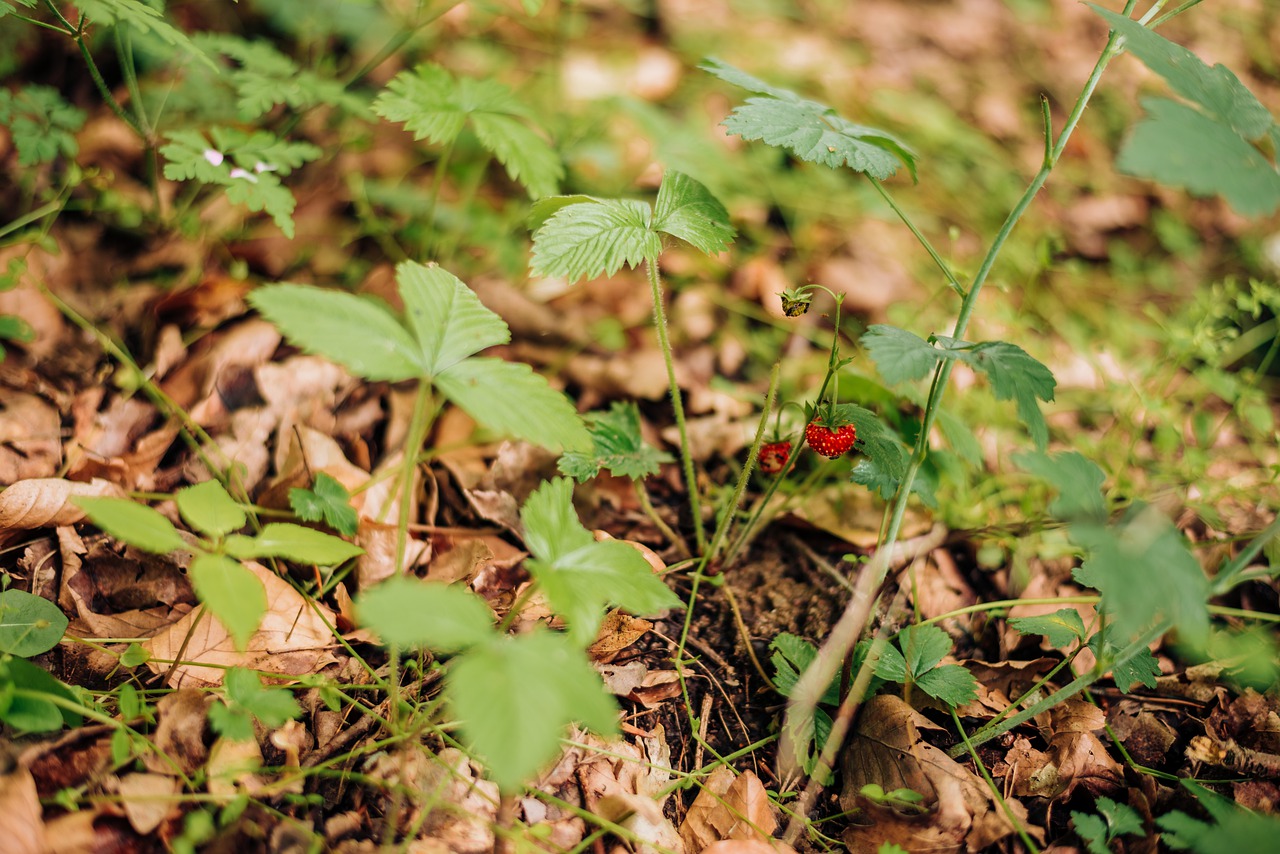

Would You Like to Plan a Strawberry Bed?
With our bed planner, you can easily plan a colourful mixed crop. Good and bad neighbours are displayed directly and you get tips on succession planting and crop rotation!
Plan a Bed Now
Planting a Strawberry Bed: How to Do It
Strawberries are sensitive to weeds in their vicinity, as they only develop very shallow roots and their growth is rather small and compact. The weeds therefore compete with the strawberry plants for space, water and nutrients and later for sunlight. The soil should therefore be thoroughly weeded and deeply loosened. It is best to use a digging fork for this. This allows you to loosen the soil deeply without disturbing the soil layers and soil life.
For a better start and sufficient nutrients, you can also fertilize the soil. Normal garden compost is not well suited for this due to its high salt and nitrogen content. Horse and cow manure are more suitable. You can find more tips on How to Fertilize Strawberries Correctly in this article. If you have a little more time, you can also start with clover or other legumes the previous year. An optimal supply of potassium is particularly important for strawberries, whereas too much nitrogen in the soil can promote diseases. If your garden soil has a pH value that is too high, you can treat it with leaf compost to acidify it a little.
As strawberries do not like to be planted in freshly loosened soil, the soil should be given time to settle. Therefore, start preparing the beds two weeks before the planned planting date. If you have a little more time, you can also establish green manure in front of the strawberries. This also loosens the soil and later enriches it with nutrients from their remains. Tagetes is particularly suitable for this. You should avoid using lupins and vetches as green manure, as they mainly accumulate nitrogen in the soil.
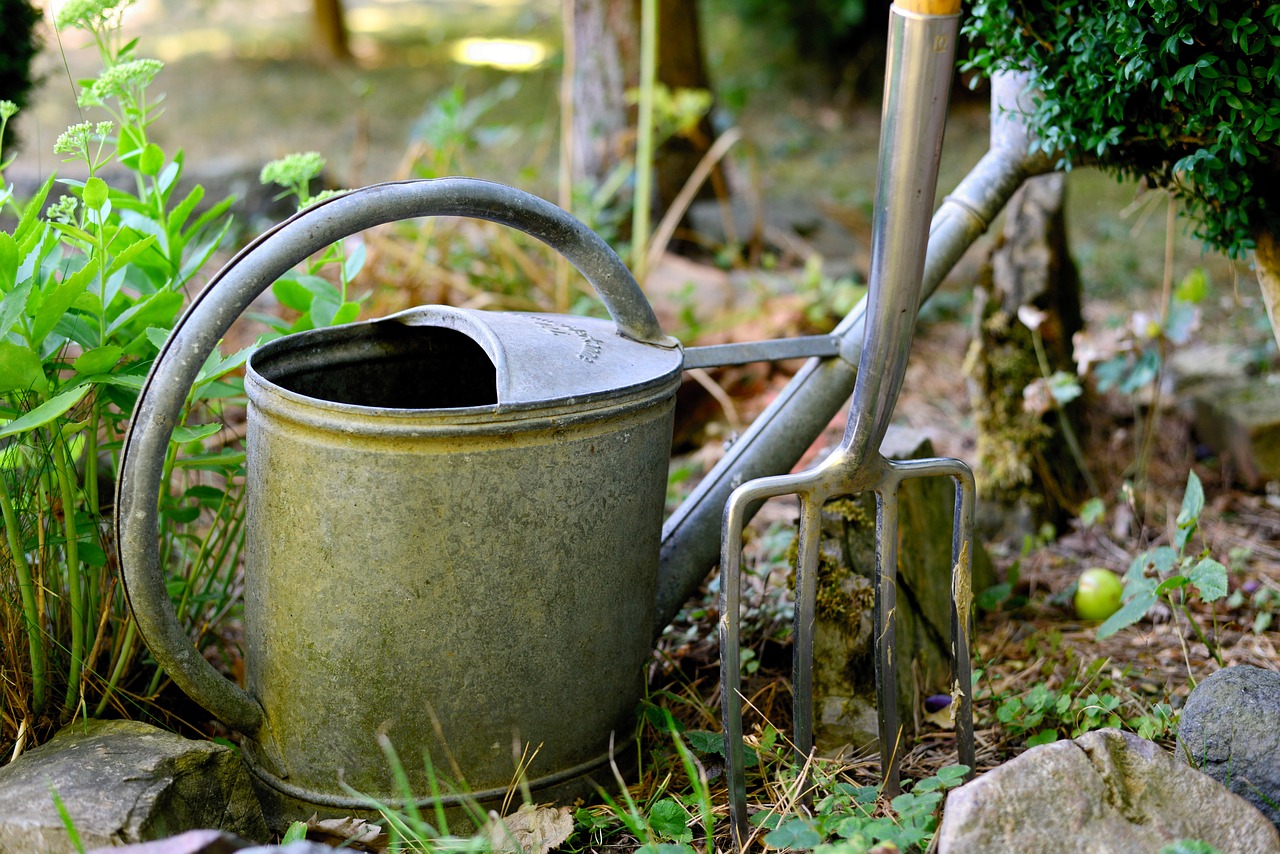
Planting Strawberries: Timing & Planting Distance
If you haven't grown your own offshoots from strawberry plantlets, buy organic quality young plants from the market or a nursery. To get a good harvest, the right time to plant is very important. The best time is in summer between June and August. However, if you have missed this, spring planting is also possible from March. In this case, you should opt for frigo plants, as these produce a harvest in the very first year of planting. When planting out the small young plants, you should give them plenty of space right from the start. The distance between the rows should be 60 cm/23 in or enough to allow you to harvest the fruit easily. The spacing between the plants should be between 20 and 30 cm/7.8 and 11.8 in. Place the young plants in the soil so that the heart is slightly higher than the soil surface.
It is best to plan your strawberry bed in a mixed culture with good companions and plants that support each other in healthy growth. You can find tips on Mixed Cultivation With Strawberries here in the article.
Planting Time for Strawberries: Garden, Monthly & Frigo Strawberries
The optimum planting time varies depending on the strawberry variety. We have put together an overview of when to plant which strawberry variety. You can find more Information on Strawberry Varieties and a List of Popular Varieties here.
Planting Garden Strawberries
Single-bearing, large-fruited garden strawberries are best planted in summer. This allows them to develop a strong, deep root system over the warm months. The earlier, the better. This will give you strong young plants that are guaranteed to bear lots of fruit the following year. Depending on the size of the young plant, you can even expect a small yield in the first year. You can vary the varieties here to cover a longer harvest period.
Multiple-Bearing Wild and Monthly Strawberries
Multiple-bearing wild and monthly strawberries prefer to be planted in spring until the beginning of May or in late summer from mid-August to the end of September. Normally, strawberries can only remain in the same location for 3 years, but this species is self-tolerant and comes back every year. It is therefore rather unusual to plant these strawberry plants in rows in a bed. Once established, the work is done and the wild strawberries will spread throughout your garden.
Set Frigo Strawberries
Frigo strawberries can be planted out between March and September . This allows you to stagger different harvest times and harvest your own strawberries over a long period of time. These plants are usually used in commercial cultivation, but they are also gaining popularity among hobby gardeners. These young plants are stored at -2 °C / -35 °F, which prolongs their winter hardiness. They thaw slowly during transportation and when planted, spring begins immediately for these plants and they start to flower. After 8 to 10 weeks, you can already harvest the first fruits.
Mixed Crop Planting Plan With Strawberries: Good Companion Plants
It is best to plant your strawberries in a mixed crop to obtain particularly robust plants. Good neighbours for strawberries include lettuce, spinach, radishes, radishes, leeks, kohlrabi, rocket and winter purslane. Many other cabbages such as head cabbage and collard greens should be planted in a different spot. You can see what your mixed crop with strawberries could look like in our prepared planting plans.
Sowing Strawberries: How It Works
Not all strawberry varieties are propagated by offshoots. Some varieties of monthly strawberries are the exception here and do not form runners. Get organic quality seeds and you're ready to go:
If sown between January and March, you can already harvest fruits in the first year of cultivation. The small seeds are light germinators and are therefore scattered directly onto the sowing soil without covering them with soil again. Press the seeds down firmly and moisten them carefully with a spray bottle to prevent them from being washed away. The seeds now need temperatures around 20 °C/68 °F to germinate. To do this, place them in a bright place out of direct sunlight. Depending on the variety, the first seedlings will appear after two to six weeks. As the seedlings get bigger (with about 4-5 leaves), it is time to prick them out. Each plant gets its own pot with nutrient-rich soil. Keep the soil evenly moist so that the seedlings can grow into stable young plants. In May, the time has come and you can plant them out.
If everything has gone well and your strawberry plants have grown well, the first flowers will appear three to four months after sowing. During the growing season, it is important that you take good care of your strawberry plants. You can read about what you need to consider when Caring for Strawberries in our article. It's all about fertilizing, pruning, propagating and overwintering strawberries. The following year, the harvest starts much earlier and you can harvest fresh strawberries from June to October.
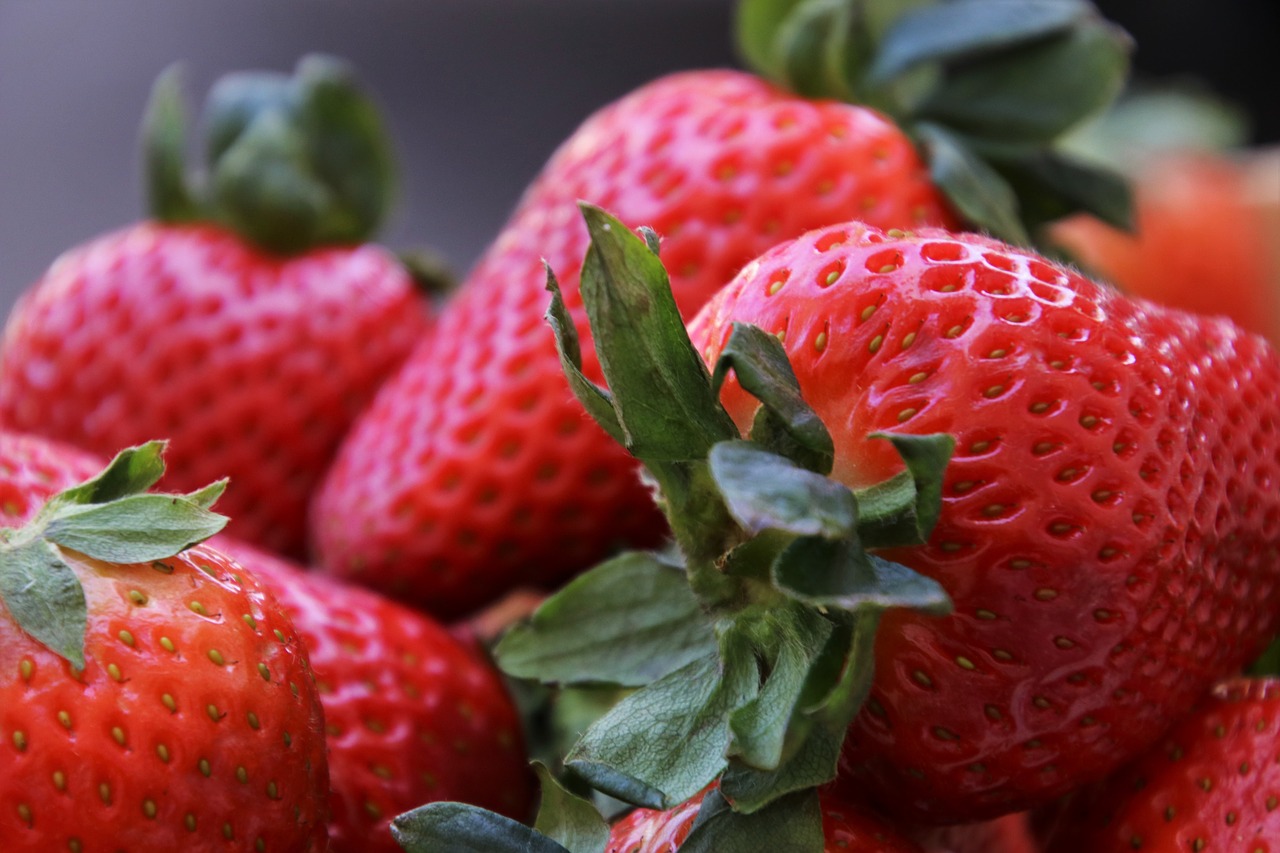
Picking Strawberries: How to Harvest Them
As strawberries do not ripen, they are only harvested when fully ripe. They are then very sensitive to pressure and, unlike pome fruit such as apples and pears, can only be stored for a very limited time. So use them fresh or process them into delicious jam, a fruity chutney, strawberry ice cream or syrup. There are many ways to preserve these delicious fruits so that you can still enjoy your harvest in winter.
When to Harvest Strawberries?
Most varieties ripen between May and August. However, there are also varieties that produce fruit quite late into September. It is best to vary different strawberry varieties with different harvest windows in order to be able to harvest strawberries for as long as possible.
Caring for Strawberries After the Harvest: Preparing for Winter
After harvesting, remove all the leaves from your strawberry plants except for the heart. Old leaves and runners are often already infected with fungal diseases and must therefore be removed from the bed. Over the winter, the leaves remove fiber and minerals from the plant and inhibit flower formation the following year. Loosen the soil around the plants slightly and fertilize it. Finally, apply a mulch layer of leaf compost. You should also lay this over the cut plants until only the tips are sticking out. This protects the root ball from the cold.
Storing Strawberries
Before storing strawberries, you should not wash them, as the moisture encourages mold and rot. Strawberries are best stored in the fridge. At room temperature, the berries dry out quickly and important vitamins and minerals are lost. It is also easier for bacteria and fungi to spread. It is also important that they are stored in a dry place. It is therefore advisable to place the strawberries in a sieve in a bowl. A bowl lined with kitchen paper also works well. Plastic packaging should definitely be thrown away. This is where moisture collects particularly well, causing rot and mold.
If you have any questions or comments, please write to us at [email protected]. Would you like to receive helpful gardening tips all year round and plan your own beds optimally? Then register here or download the Fryd app for Android or iOS.
Fryd - Your digital bed planner
Cover picture by Pat_Scrap on Pixabay.

Marie
Marie is an agronomist. She is particularly interested in the sustainable and organic cultivation of vegetables and other plants. In her own garden, she gained experience and likes to try things out to learn from nature. She is particularly interested in the values and principles of permaculture, in order to contribute not only to the well-being of nature, but also to the well-being of people and future generations.
Learn MoreCurrent Topics in the Community
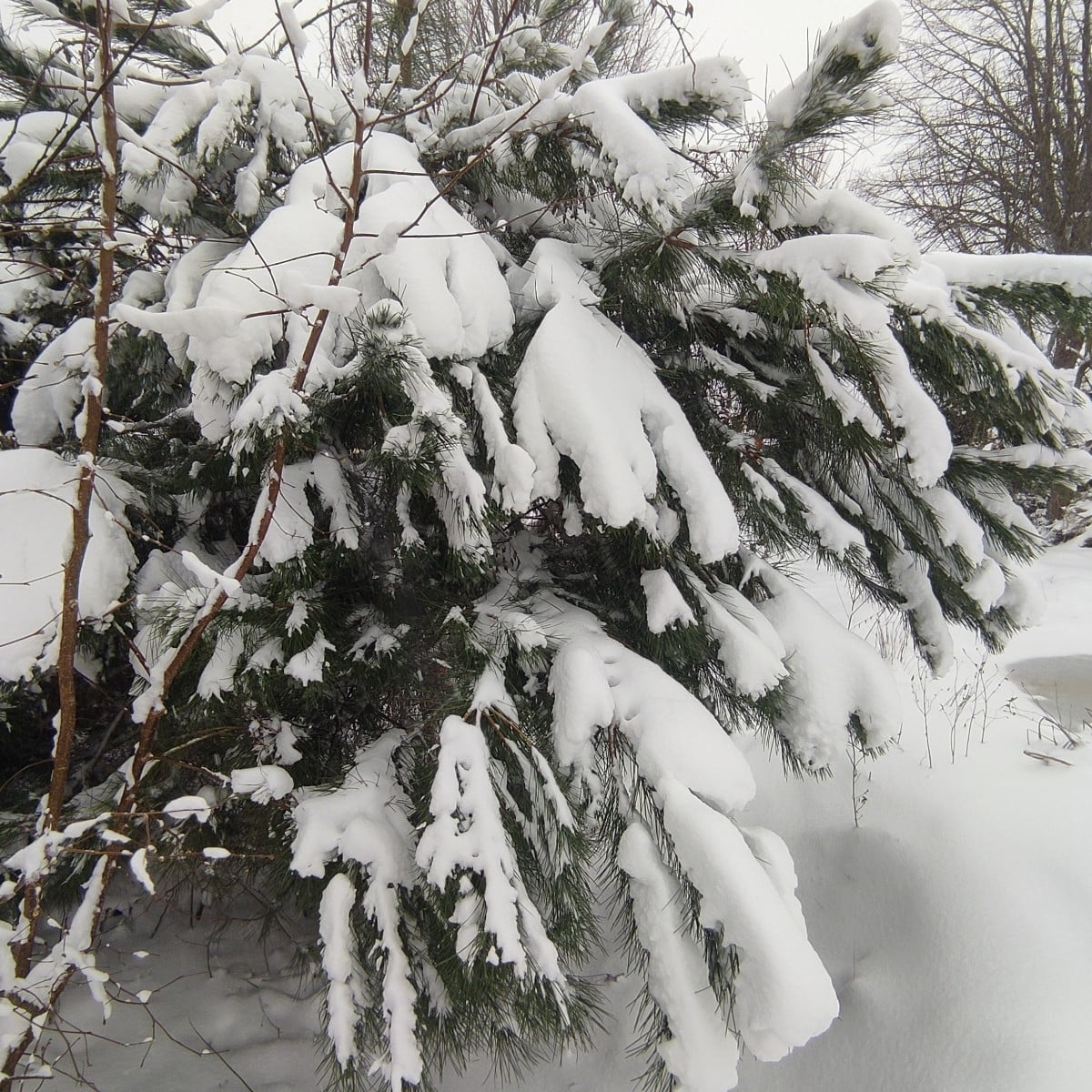
Liked 1 times
The pine tree is bearing the weight of the snow.
Show 1 answer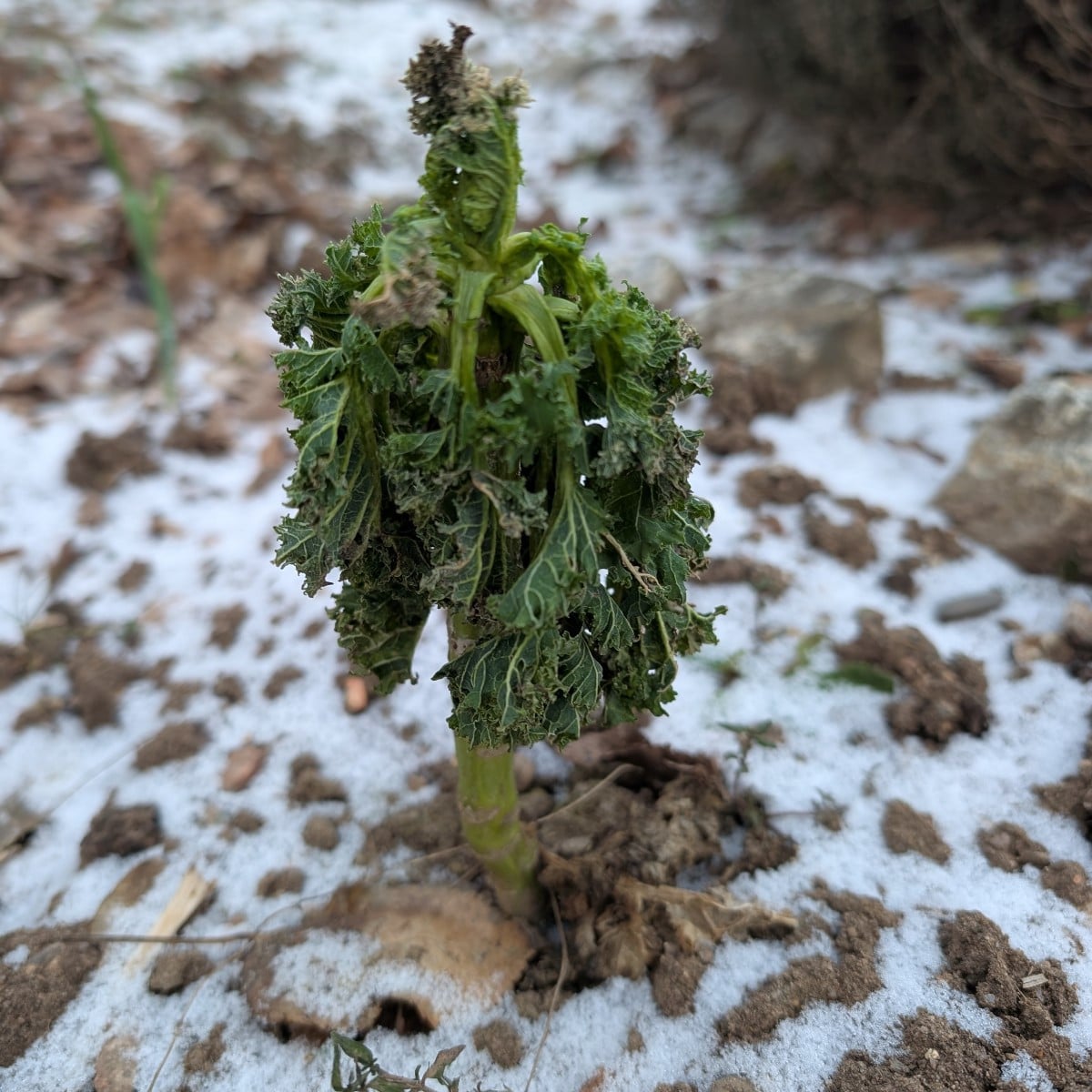
Hello lovelies, I could use your advice...this year I planted @rosenkohl and @gruenkohl for the first time. The kale grew really well after planting in the fall and had really big leaves until the cabbage white butterfly attacked it. I then harvested quite a bit and put netting over it, but somehow it hasn't really recovered since then. We've had frost since last week and it snowed yesterday, the temperature during the day is 0°C. The kale and Brussels sprouts are now looking very weak and I'm wondering where the fault lies, as both varieties should be able to withstand such low temperatures? Does anyone have any tips?
Show 5 answers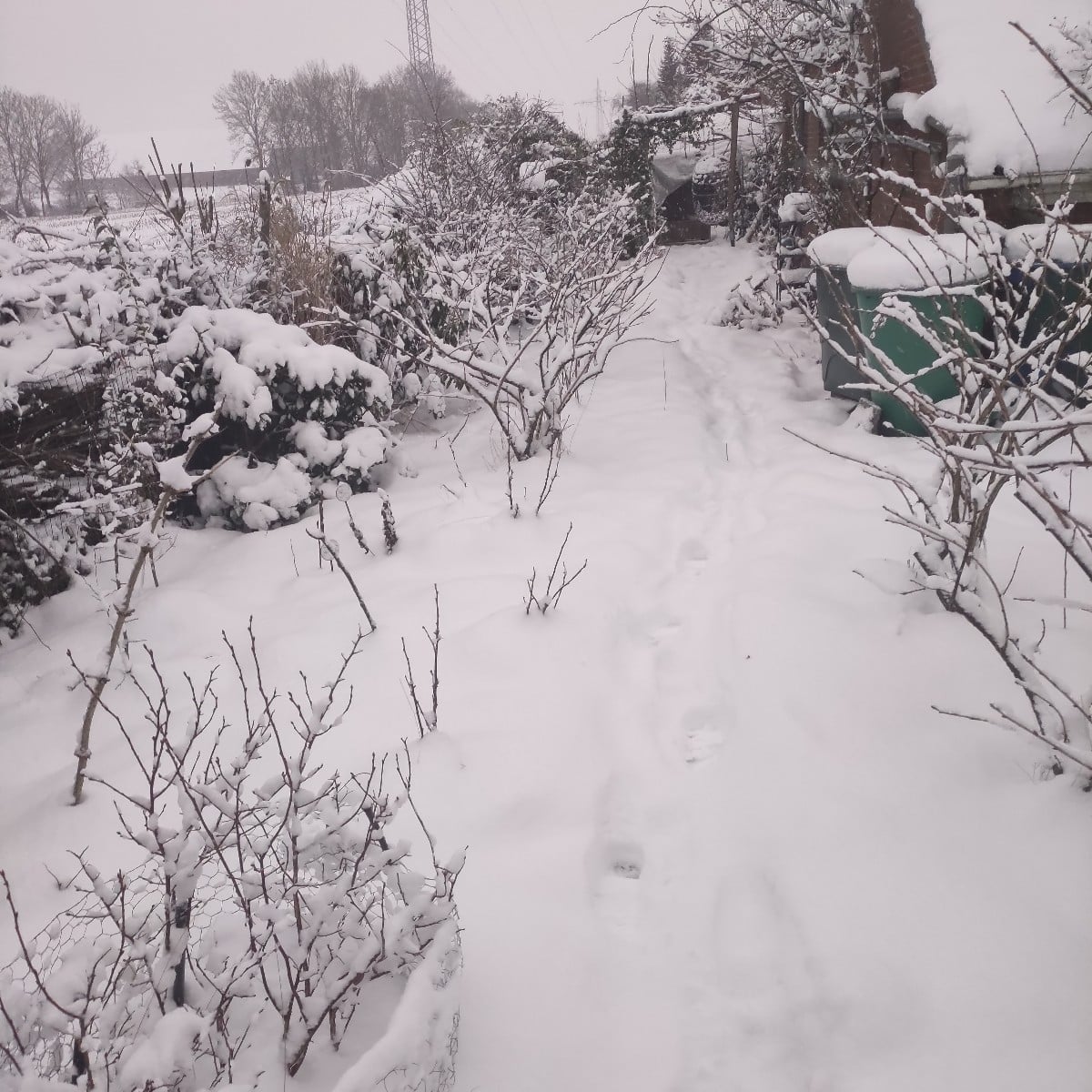
Liked 1 times
It stops being beautiful. ☃️☃️
Show 1 answerPopular Articles

Overwintering Parsley: How to Do It Successfully

How to Grow Lettuce in Winter: Varieties, Sowing, Harvesting

Growing Sage Plant: Tips for Sowing and Harvesting

What Herbs Can Be Planted Together?

Create & Design a Permaculture Garden

Overwintering Plants: Tubs, Pots and Raised Beds

Pruning, Fertilizing & Propagating Currants: Care Tips

Pruning Raspberries: How to Do It

Vegetable Garden With Greenhouse: How to Use Greenhouse Effect

Winterizing Beds and the Garden: How to Do It
FAQ
When to plant and sow strawberries?
It is best to plant your young plants between June and August so that they can grow well before winter arrives. When sowing, you should plant the seeds in the soil between January and March.
When can you pick strawberries?
Depending on the variety, you can harvest your strawberries between May and September. Only harvest strawberries when fully ripe, as they do not ripen like many other berries!
How to store strawberries properly?
Do not wash the strawberries before storing them, as this will encourage mold. The berries should be dry. It is best to store them in a bowl in the fridge.
What is the right location for strawberries?
It is best to choose a full sun to partially shaded spot that is sheltered from the wind. The soil should be loose and humus-rich, with most strawberries preferring a slightly acidic to neutral pH value between 6 and 7.
Strawberries are perennial and can be harvested for several years after planting. After three to four years, the plants are usually replaced as they are no longer as productive.